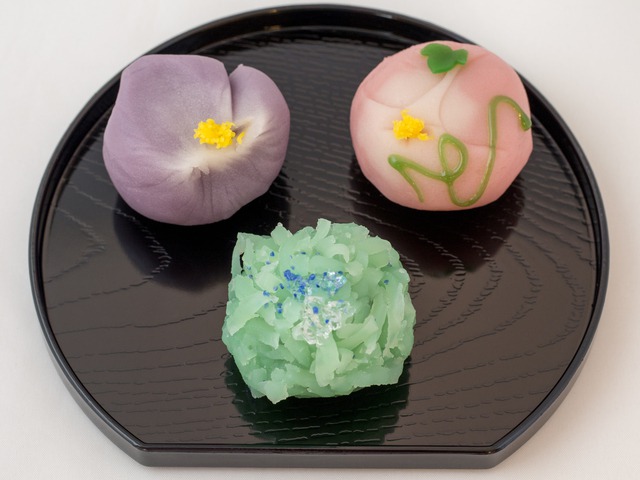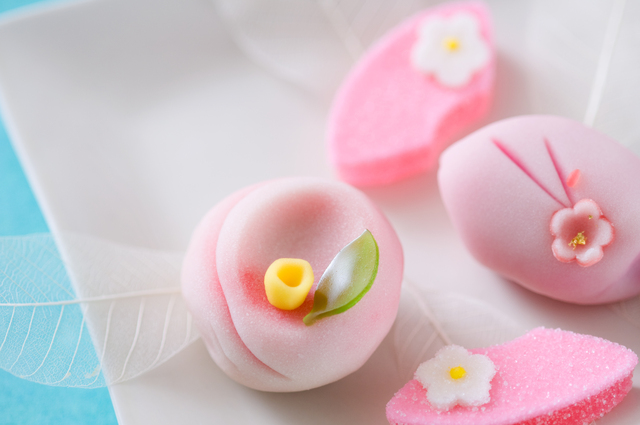
Edible art? Enjoy Wagashi, traditional Japanese sweets
The attraction of Wagashi is not only enjoying its taste but also feeling each season with your eyes.
This post may contain affiliate links. If you buy through them, we may earn a commission at no additional cost to you.
Wagashi as art.
Wagashi is a traditional Japanese confectionery which is often served with tea. It is usually made of mochi (glutinous rice cake), anko (azuki bean paste) and fruit.
Wagashi is essential to enjoy as a treat and an art to express the passing seasons. For example, wagashi in summer can express 'coolness' with a clear jelly to represent water or freshness to help get through the hot, humid, summer season. It is a great pleasure to enjoy the changing seasons by enjoying the changing wagashi.
Spring
The season famous throughout Japan for the blooming cherry trees. Spring is faithfully represented in wagashi with cherry blossoms and other spring flowers, while wagashi shops, too, are full of a flowery atmosphere.
Cherry blossoms
Real cherry blossom leaves are sometimes embedded in wagashi. You can feel that Spring is coming soon!
Summer
To get through the humid summer, wagashi has a clear color to express 'water' and freshness.
A gold fish bowl
This looks just like a real gold fish bowl, right?
Clear colors
The beautiful clear colors help to make us feel cool despite the humidity.
Autumn
In Autumn, wagashi express the beautiful colors of changing leaves and mountains.
Persimmons and colored leaves are the traditional symbols of autumn.
Chestnuts
This wagashi has a chestnut mixed in with the anko (red bean paste). Chestnuts are another popular food in autumn.
Winter
Winter wagashi express the quietness of snow falling, or the warmth of sunshine we can feel in the cold winter.
Christmas!
These days, there are even cute Christmas wagashi.
Japan is surrounded by beautiful nature and it is possible to feel each season closely. Japanese culture often celebrates this subtle appreciation of feeling the changing seasons. Wagashi is just one of the ways these seasonal ideas are expressed and enjoyed.
The information in this article is accurate at the time of publication.















